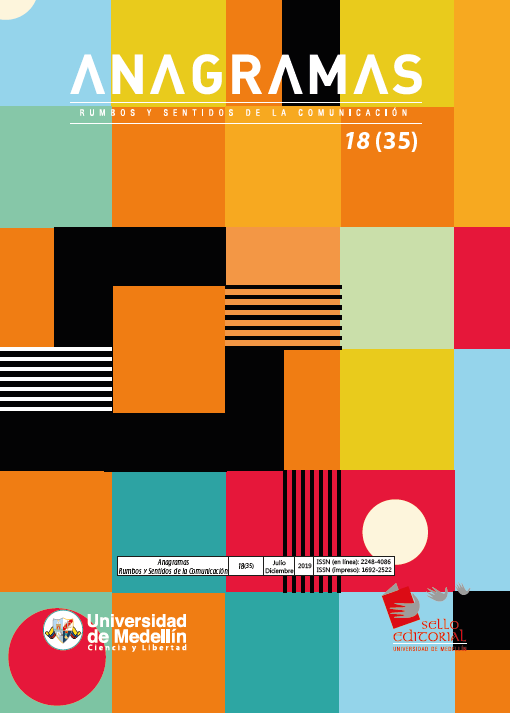Electoral strategies against security. Comments on campaign positioning. Buenos Aires (2007)
Main Article Content
Abstract
security issue to focus on the social topics, and +BA reinforced the prescriptive component (it should continue like this). The components used by each candidate form a recipient that defines a differential us in each case: the victim citizen; the rational citizen and the protected citizen
Article Details
References
Arnoux, E. (2008). El discurso latinoamericanista de Hugo Chávez. Biblos.
Beckett, K. (1997). Making crime pay. Oxford University Press.
Beckett, K. y Godoy, S. A. (2008). Power, politics, and penalty: Punitiveness as backlash in American democracies. Studies in Law, Politics, and Society. 45, 139-173. https://doi.org/10.1016/S1059-4337(08)45004-4
Beckett, K. y Herbert S. (2010). Banished: The new social control in urban America. Oxford University Press. https://doi.org/10.1093/acprof:oso/9780195395174.001.0001
Boutaud, J, y Verón, E. (2007). Sémiotique ouverte. Itinéraires sémiotiques en communication. Hermès Science.
Caimari, L. (2009). Buenos Aires en la era del 'pistolerismo'. Modernidades delictivas. Desarrollo Económico, 49(195), 389-419.
Caimari, L., Andrade, L. U., y Shindell, R. (2016). While the city sleeps: A history of pistoleros, policemen, and the crime beat in Buenos Aires before Perón. University of California Press.
Caletti, S. (2001). Siete tesis sobre comunicación y política. Diálogos de la Comunicación, 63, 37-49.
Calzado, M. (2015). Inseguros. Aguilar.
Calzado, M., Fernández, M., y Lio, V. (2013). ciudad segura. Vecindad, víctimas y gubernamentalidad. Confluenze: Rivista di Studi Iberoamericani, 5, 249-263. https://doi.org/10.6092/issn.2036-0967/3768
Chevigny, P. (2003). The populism of fear. Politics of Crime in the Americas. Punishment and Society, 5(1), 77-96.
Colombo, R., (2011). Populismo punitivo y politización de la (in)seguridad urbana en Argentina. En M. Gutiérrez (ed.), Populismo punitivo y justicia expresiva (pp. 183-220). Fabian di Placido.
Dallorso, N., y Seghezzo, G. (2015). Inseguridad y política: el miedo como operador estratégico en las campañas electorales en Argentina. Comunicación y Sociedad, 24, 47-70.
Dammert, L., y Tobar, F. S. (2017). Fear and insecurity in Latin America. En M. Lee y G. Mythen (Eds.), The Routledge International Handbook on Fear of Crime (pp. 339-353). Routledge. https://doi.org/10.4324/9781315651781
Del Olmo, R. (2000). Ciudades duras y violencia urbana. Nueva Sociedad, (167), 74-86.
Fleitas, M.S. (2014). Democracia, ciudadanía y cuestión social Jujuy-Argentina en la década de 1920. [Tesis doctoral]. Universidad Pablo de Olavide.
Foucault, M. (2000). Defender la sociedad, Curso en el Collège de France 1975-1976. Fondo de Cultura Económica.
Garland, D. (2000). The culture of high crime societies: Some preconditions of recent ‘law and order’ policies. British Journal of Criminology, 40(3), 347-375. https://doi.org/10.1093/bjc/40.3.347
Garland, D. (2012). La cultura del control. Gedisa.Gest, T. (2001). Crime and Politics. Oxford University Press.
Hall S., Chas, C. Jefferson, T., Clarke J. y Roberts, B. (2013). Policing the Crisis. Mugging the State and Law and Order (1979). Palgrave Macmillan.
Karpf, D., Kreiss, D., Nielsen, R., y Powers, M. (2015). Qualitative Methods in Political Communication Research, International Journal of Communication, 9, 1888-1906.Kessler, G. (2009). El sentimiento de inseguridad. Siglo XXI.
Kessler, G. (2011). La extensión del sentimiento de inseguridad en América Latina: Relatos, acciones y políticas en el caso argentino. Revista De Sociologia e Politica, 19(40), 83-100. https://doi.org/10.1590/S0104-44782011000300007Kessler, G. y Merklen, D. (2013). Una introducción cruzando el Atlántico. En R. Castel, G.
Kessler, D. Merklen y M. Murard, Individuación, precariedad, inseguridad (pp. 9-31). Paidós. Mangone, C., y
Warley, J. (1994). El discurso político: del foro a la televisión. Biblos.
Martini, S. y Pereyra, M. (2009). La irrupción del delito en la vida cotidiana. Relatos de la comunicación política. Biblos.
O’Malley, P. (2006). Riesgo, neoliberalismo y justicia penal. Ad Hoc. Pegoraro, J. (2001). Las políticas de seguridad en centros urbanos de Europa y América Latina. Antigua Universidad de Oñati.
Ríos, A. (2013). La Policía Metropolitana de la ciudad de Buenos Aires, gobierno y represión. Derecho Penal y Criminología, 6, 213-226.
Simon, J. (2012). Gobernar a través del delito. Gedisa.
Sistema Nacional de Información Criminal (snic) (2007). Sistema Nacional de Información Criminal. Informe Total País 2007. Ministerio de Justicia y Derechos Humanos de la Nación.
Sozzo, M. (2016). Democratization, politics, and punishment in Argentina. Punishment y Society, 38(3), 301-324. https://doi.org/10.1177/1462474516645689Verón, E. (1983). Il est là , je le vois, il me parle. Communications 38, 98-120.
Verón, E. (1987). La palabra adversativa. En AA.VV. El discurso político. Lenguajes y acontecimientos (pp. 11-26). Hachette.
Verón, E. (2004). La semiosis social. Gedisa. Vommaro, G., Morresi, S., y Bellotti, A. (2015). Mundo PRO. Planeta.
Wolton, D. (1998). La comunicación política: construcción de un modelo. En G, Gauthier, A. Gosselin y J. Mouchon (Eds.), Comunicación y política. Gedisa.





